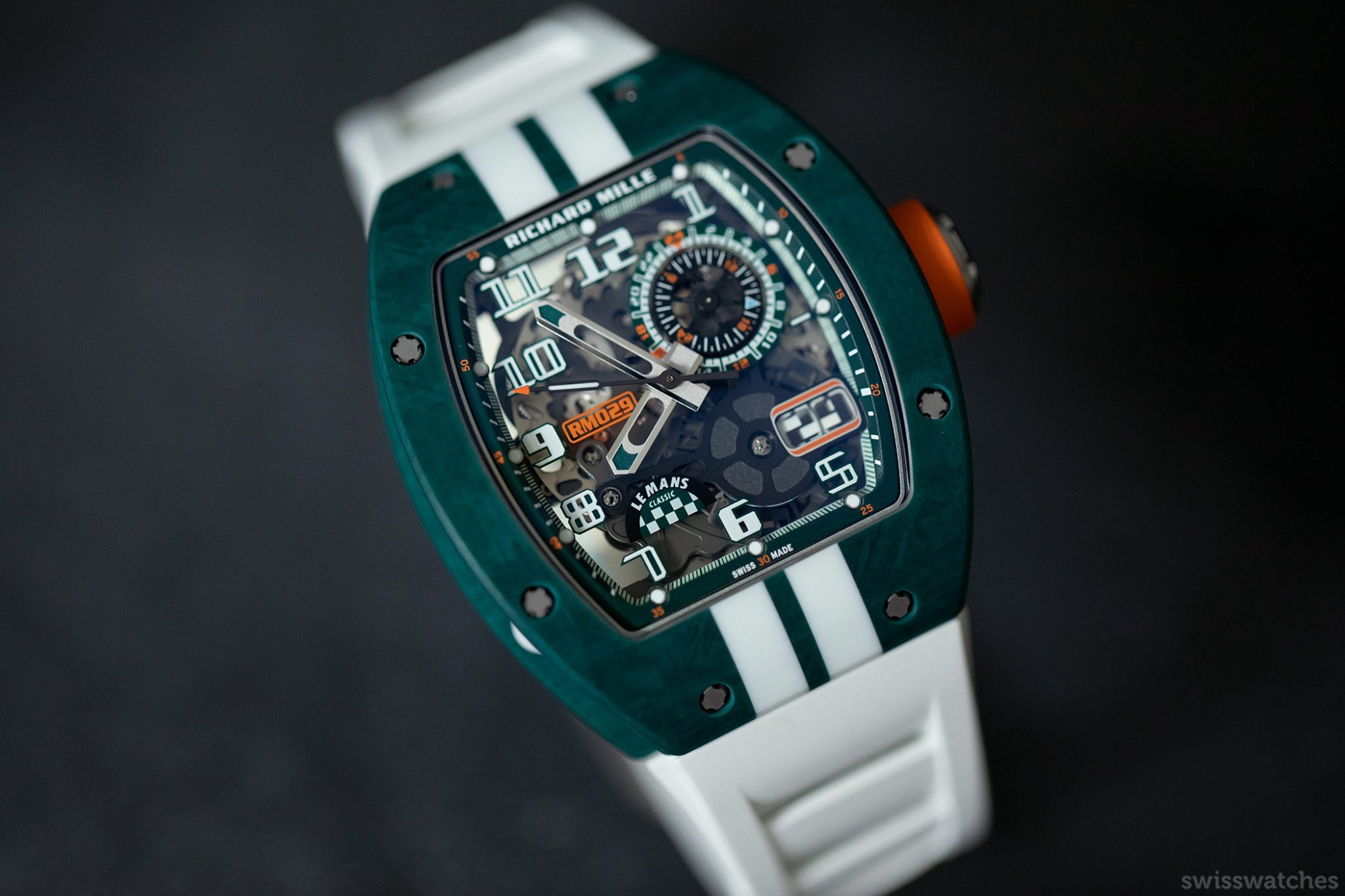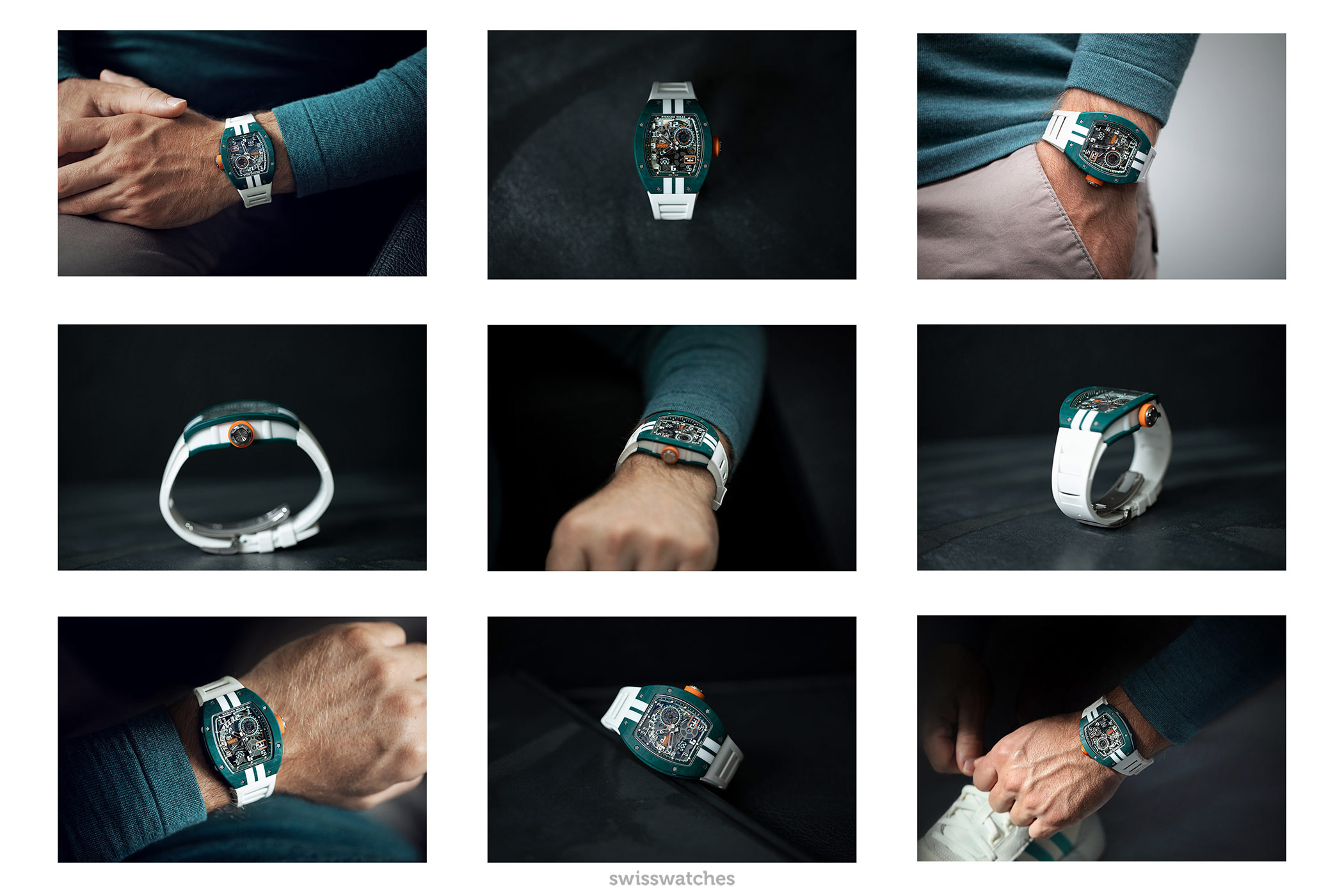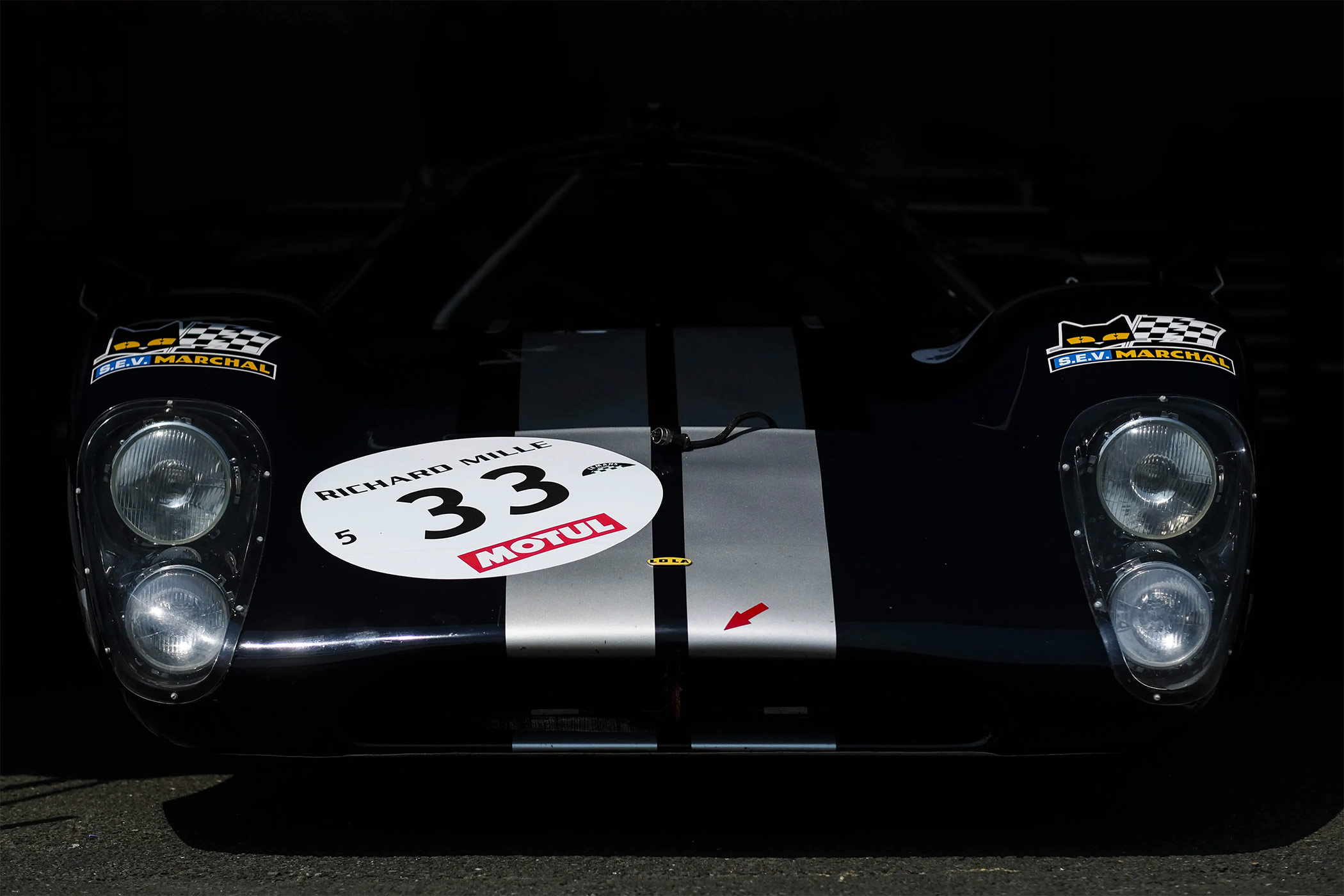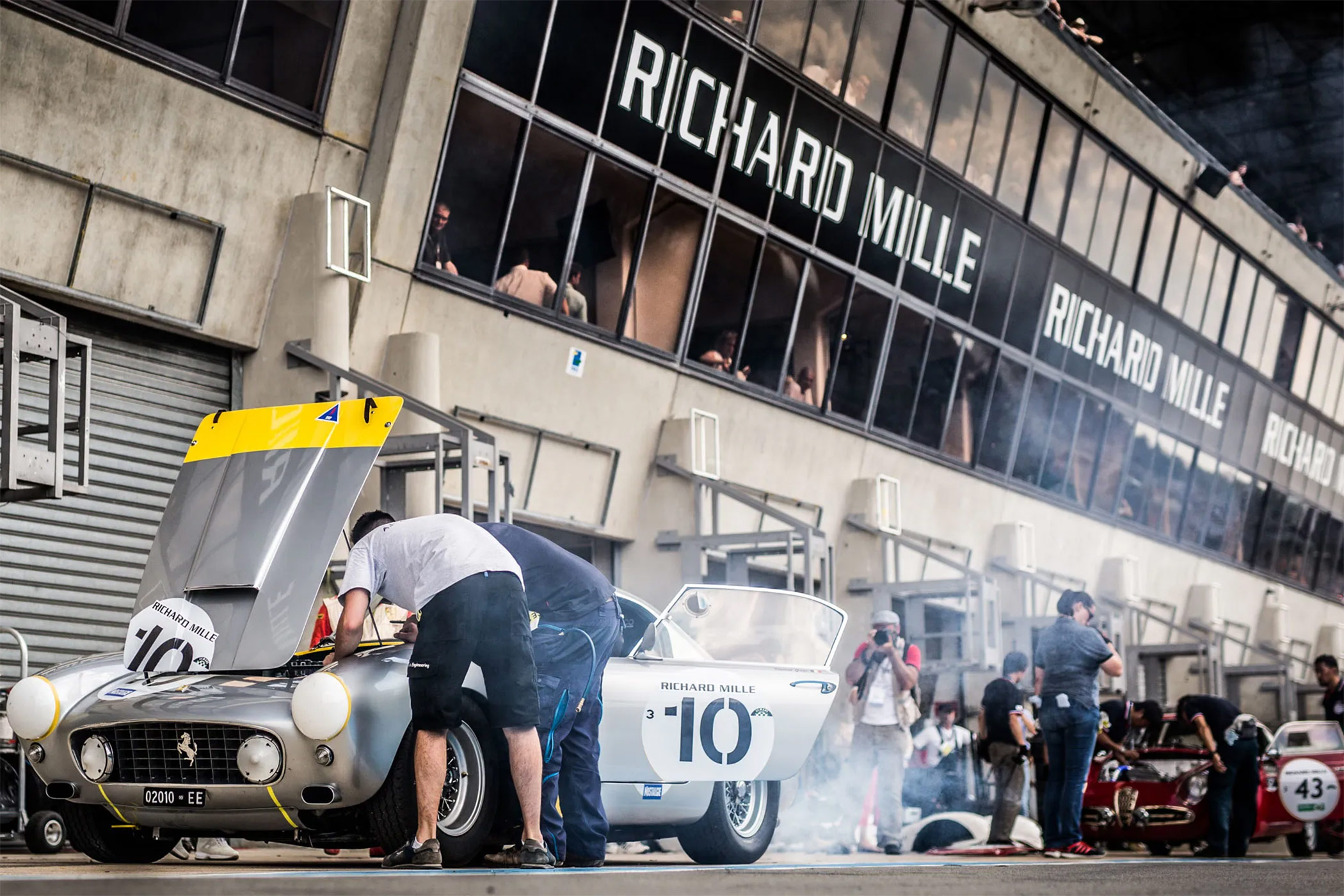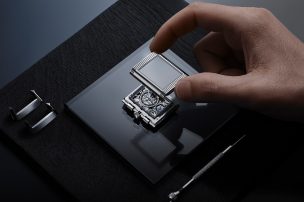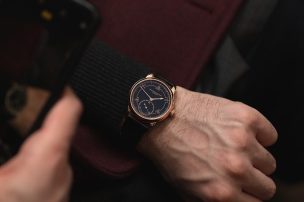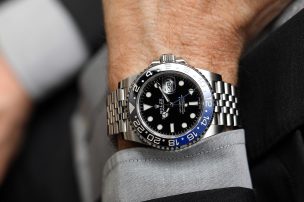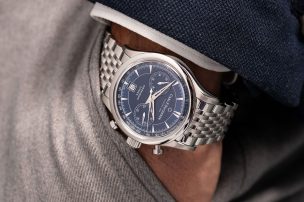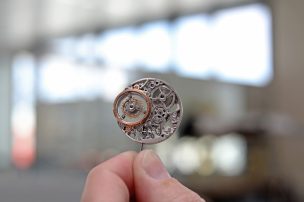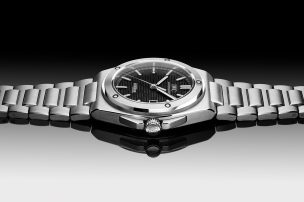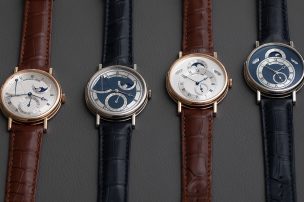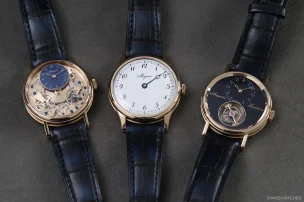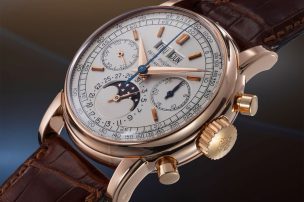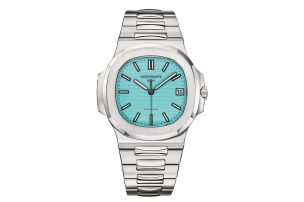
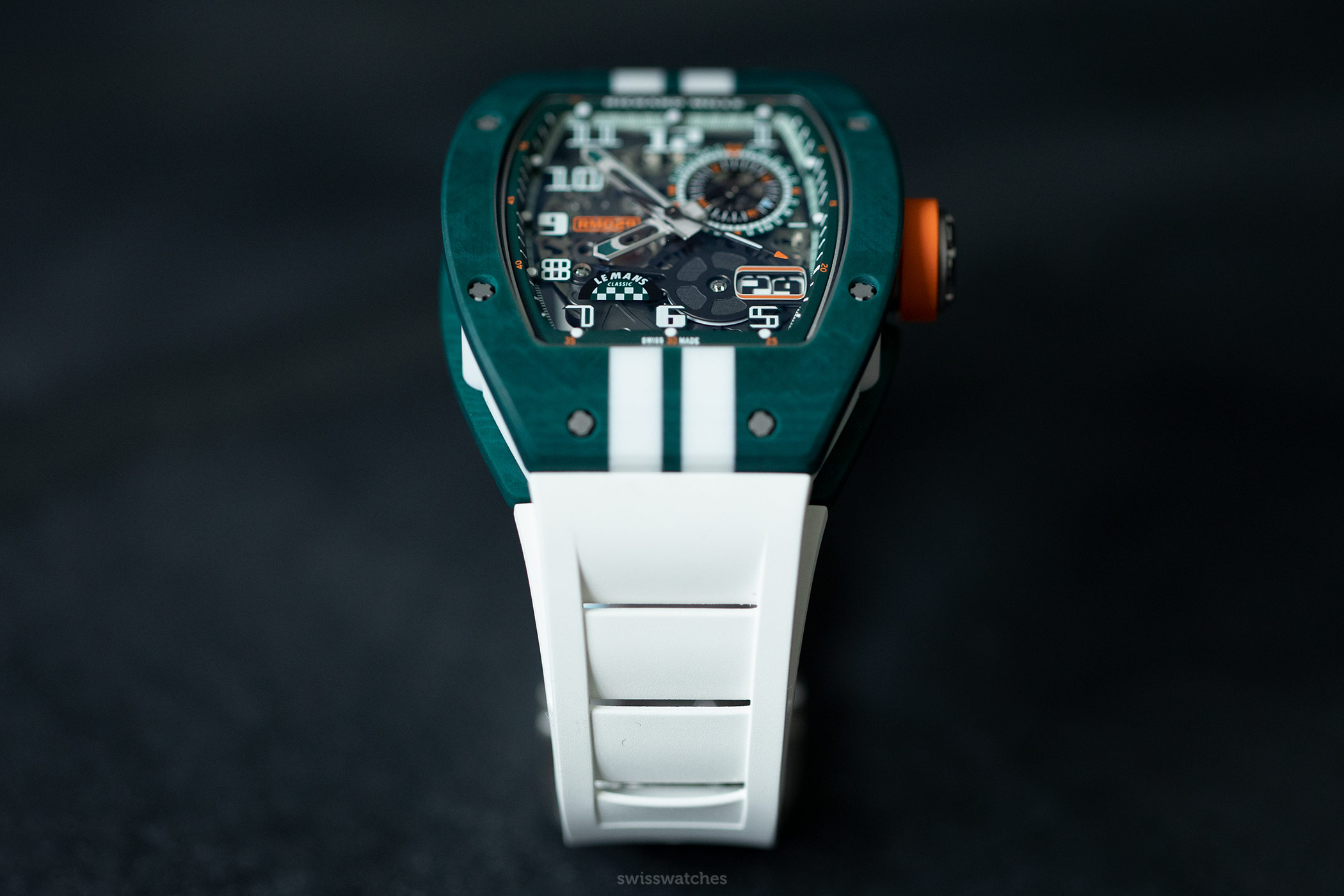
Full Speed Ahead: The Richard Mille RM 029 Le Mans Classic
Incredible watches are characterised by the fact that they display much more than just the current time. In the best cases, they also say something about the zeitgeist in the world. It would not an exaggeration to say that the Richard Mille RM 029 Le Mans Classic is one such model.
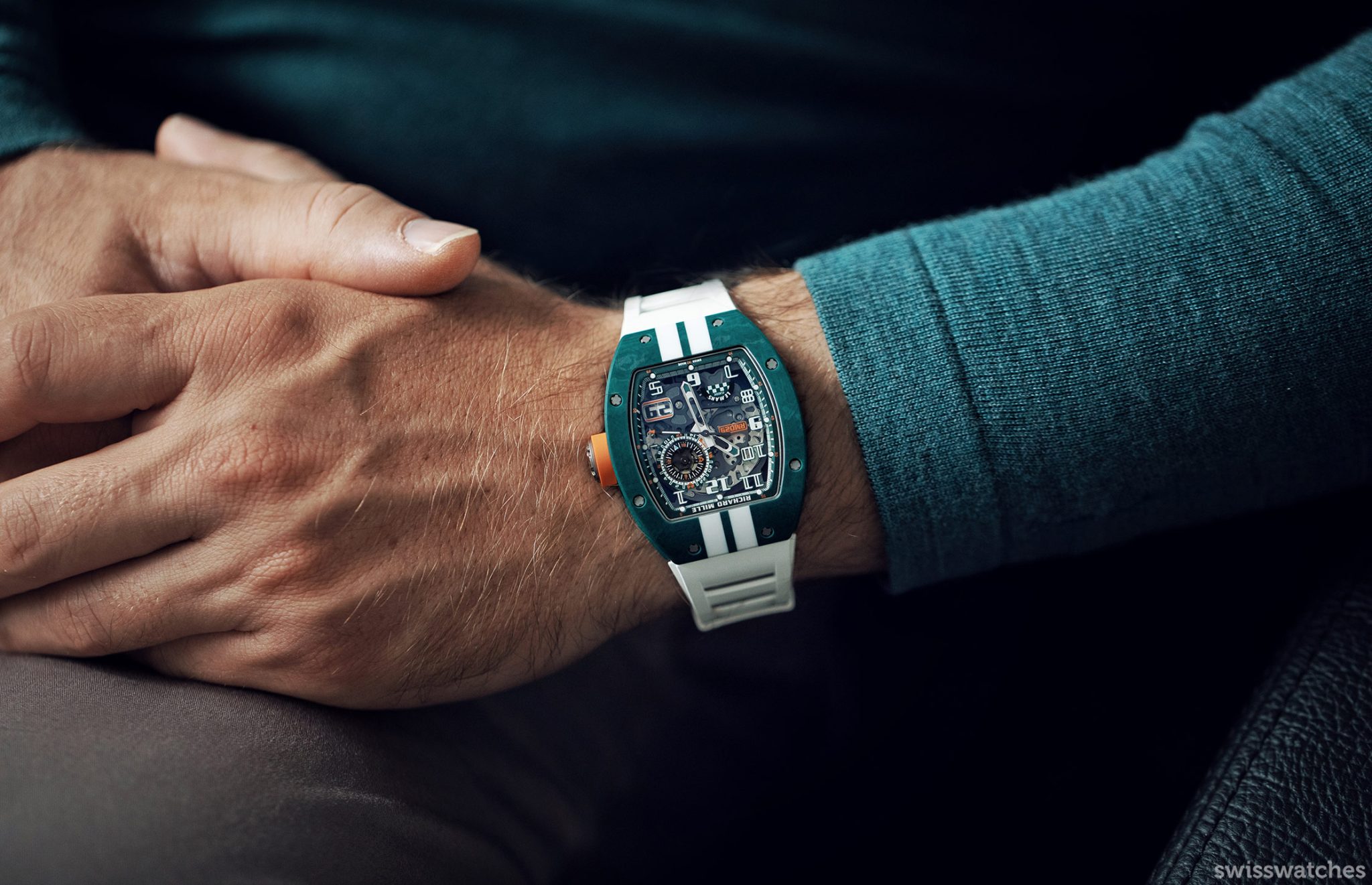
As a limited edition of 150 pieces, whoever is hoping to get their hands on one by the end of this article must be aware that by now, pretty much every piece is already spoken for – or at least promised to someone.
So why report about it at all? For exactly that reason! The Swisswatches team was beyond excited about shooting with this timepiece, because it is the super-special and extra-rare that often moves one the most. To put it another way: not everyone can acquire a Banksy, yet the art of the world’s most famous street artist is a continual topic of discussion, even outside his circle of collectors, because his work is so ground-breaking. It was a similar story when we looked at this particular watch. What can it do? How does it sit on the wrist? What is the story behind it? Will our time spent with this Richard Mille watch help us to better understand the worldwide enthusiasm and global demand surrounding both the brand and its values?
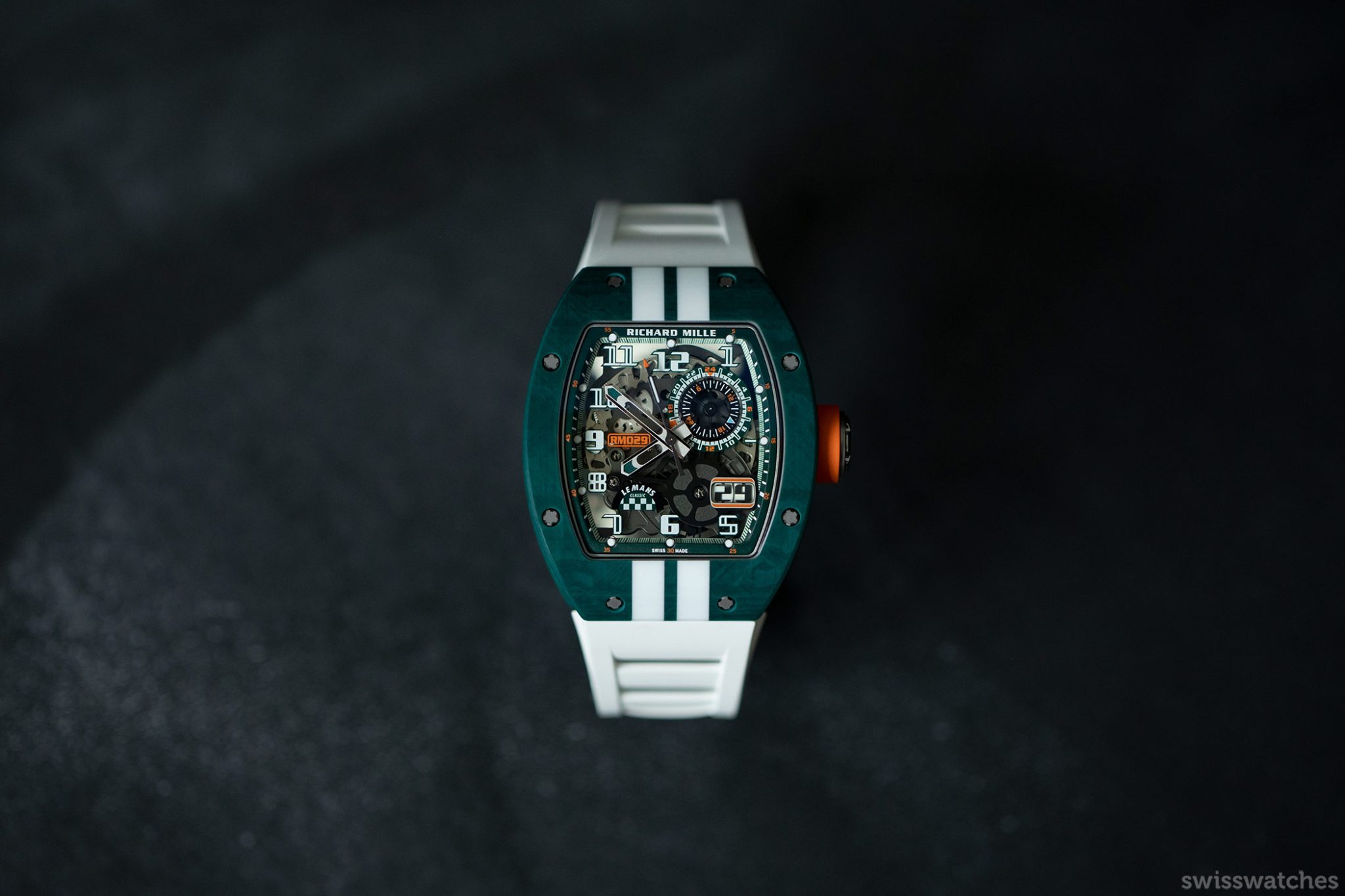
After all, the RM 029 Le Mans Classic is not only a highly exclusive piece of watchmaking, worth 155,000 Swiss francs plus country-specific taxes. It’s also one that, in its green and white apparel of Quartz TPT – a composite material made of hundreds of layers of silica fibres – is quite striking to boot.
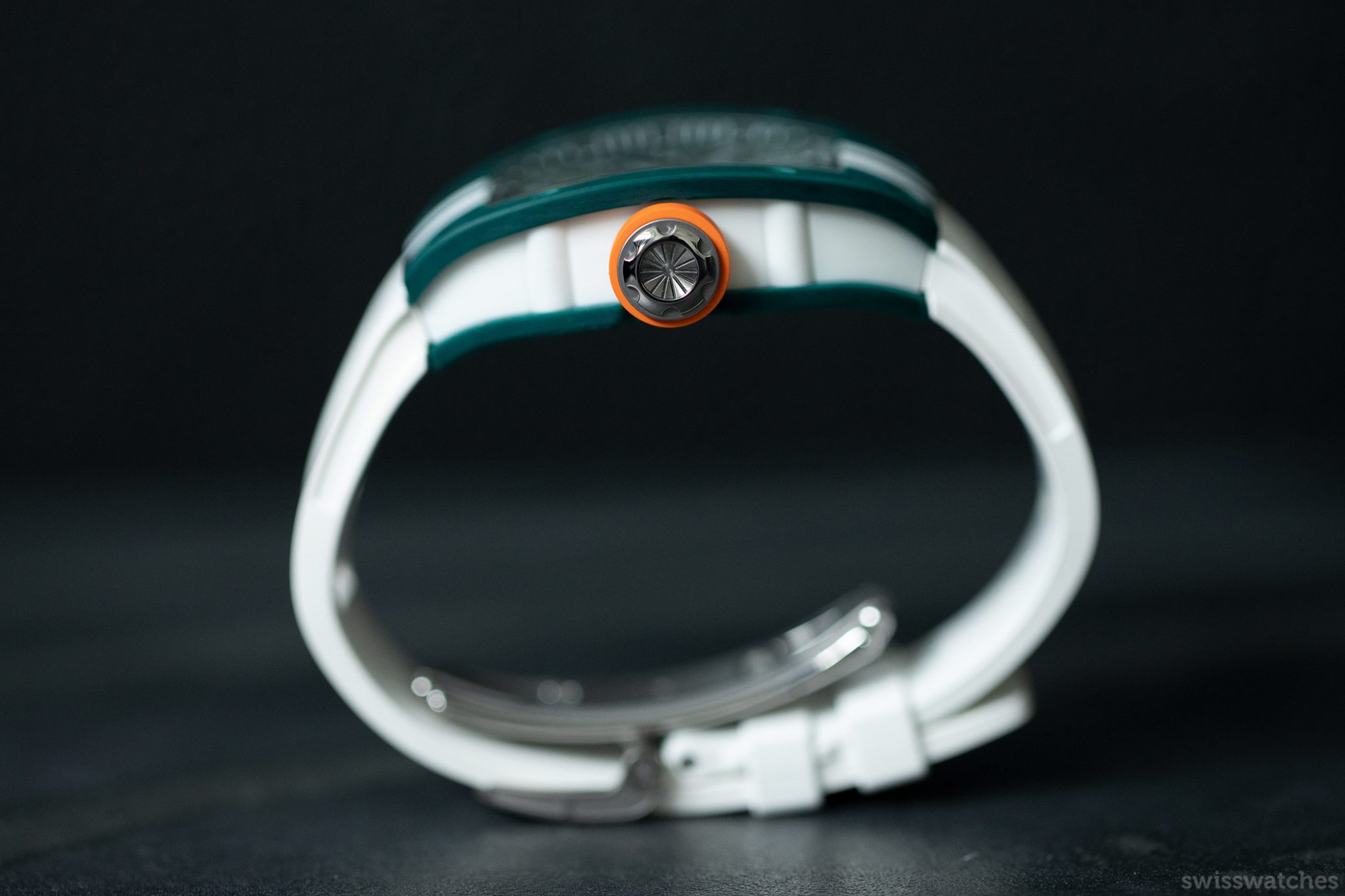
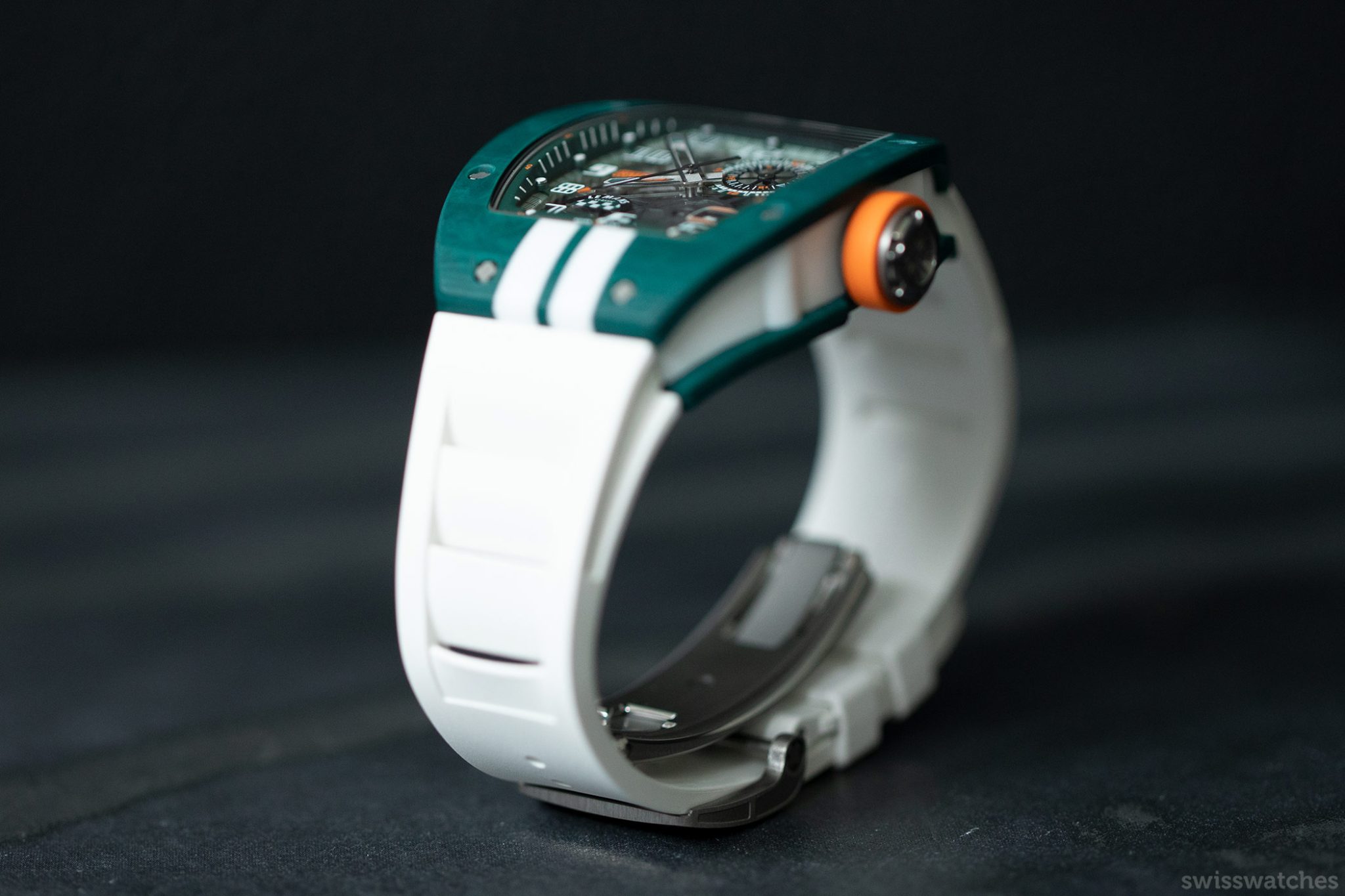
A green and white case, combined with an orange crown? There’s a lot to like about it, but it will equally make more classically minded gentlemen shake their heads. Because this is also part of the 21st century watch world; tastes amongst collectors tend to (fortunately) vary a lot, and this RM 029 is well and truly haute horlogerie for the generation of gallant street style. It is a watch – and a brand – that successfully breaks with all learned conventions about fine watchmaking.
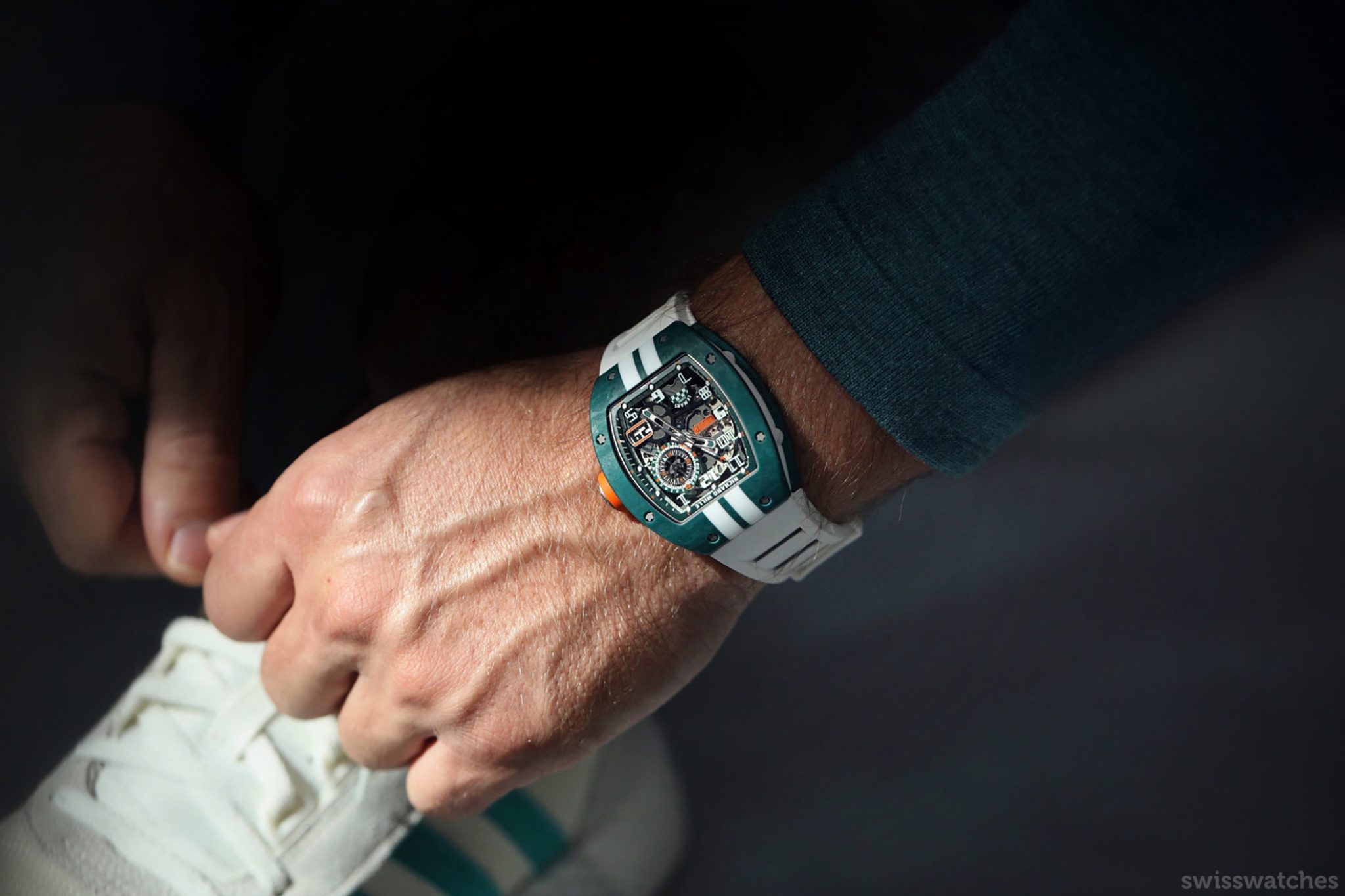
The lowdown on the watch
First of all, the important facts. The RM 029 is known as the successor to the RM 010, first appearing over five years ago as a thinner, more wearable variation. That said, the ‘original-029’, so to say, was not home to some of the special features of the Le Mans Classic edition shown here, but was rather a pure three-hand watch with date display. The case of the new RM 029 Le Mans Classic measures 40.10 x 48.15 x 13.10 mm. The middle part of the case consists of white quartz TPT, the caseback with sapphire crystal is green, and the front is a mix of white and green (the colours of the Le Mans Classic), taking inspiration from the two white Le Mans stripes.
Inside the case, the skeletonised RMAS7 movement provides hours, minutes, seconds and most importantly, a 24-hour display at two o’clock. A nice detail on the latter is the blue dot at 16 o’clock (the time at which the race traditionally starts).
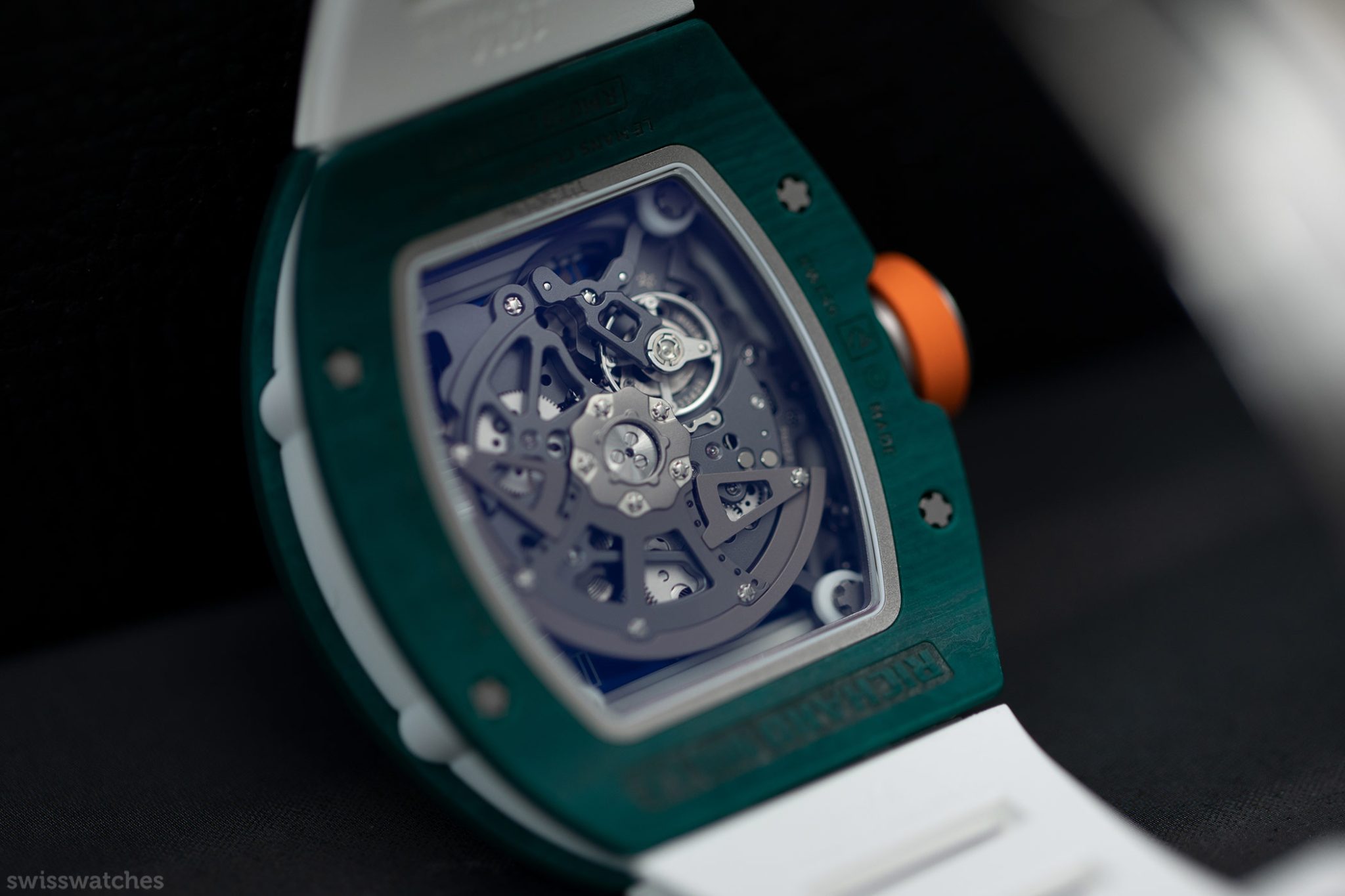
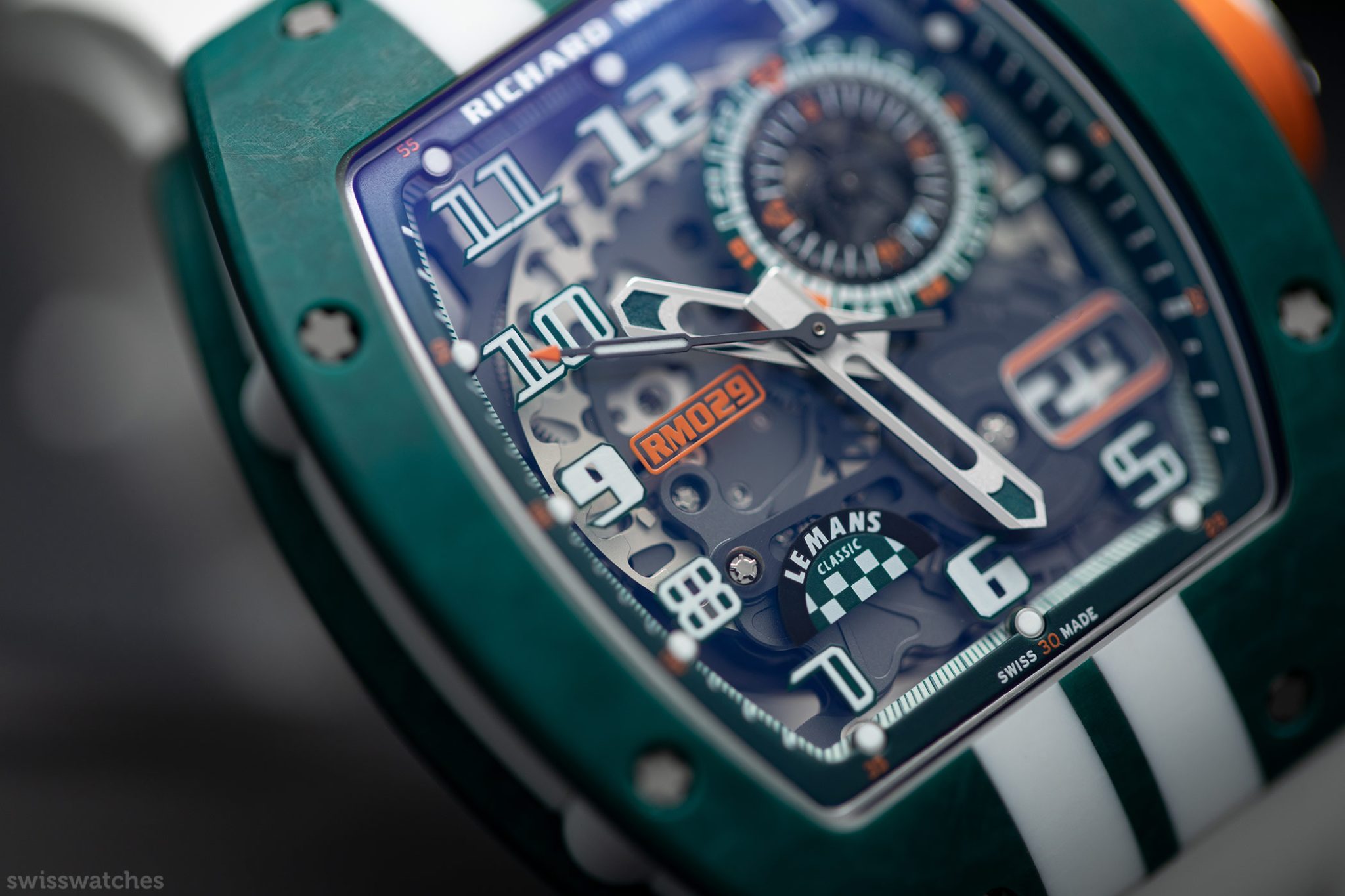
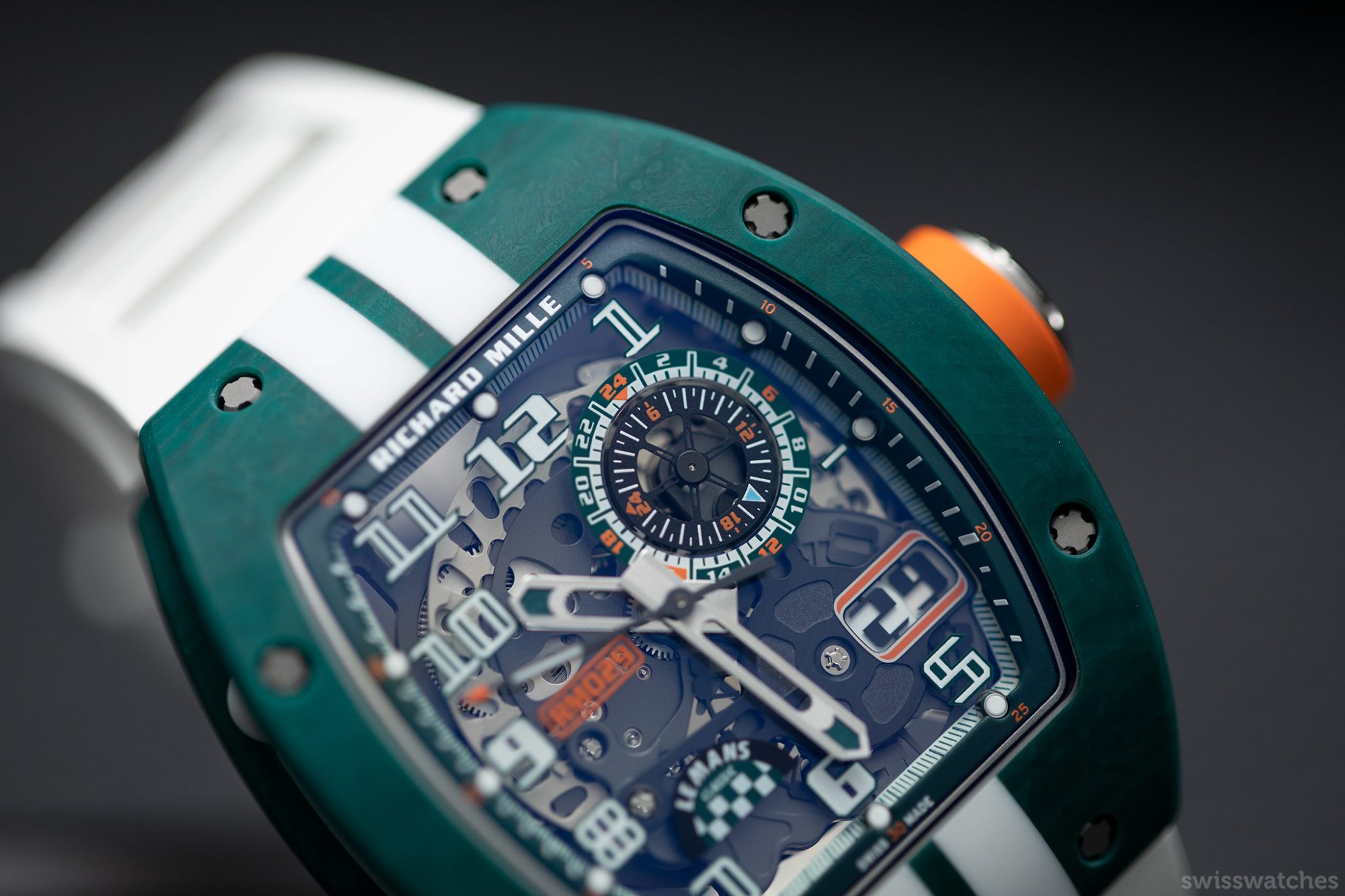
The big date, on the other hand, remains at four o’clock, while at seven o’clock, the logo of the Le Mans Classic stands out with its finish flag. Meanwhile, the typically Richard Mille variable-geometry rotor makes it possible to individually adjust the winding speed to the movement level of the wearer. The balance works at a frequency of 4 Hz, and the power reserve is around 55 hours.
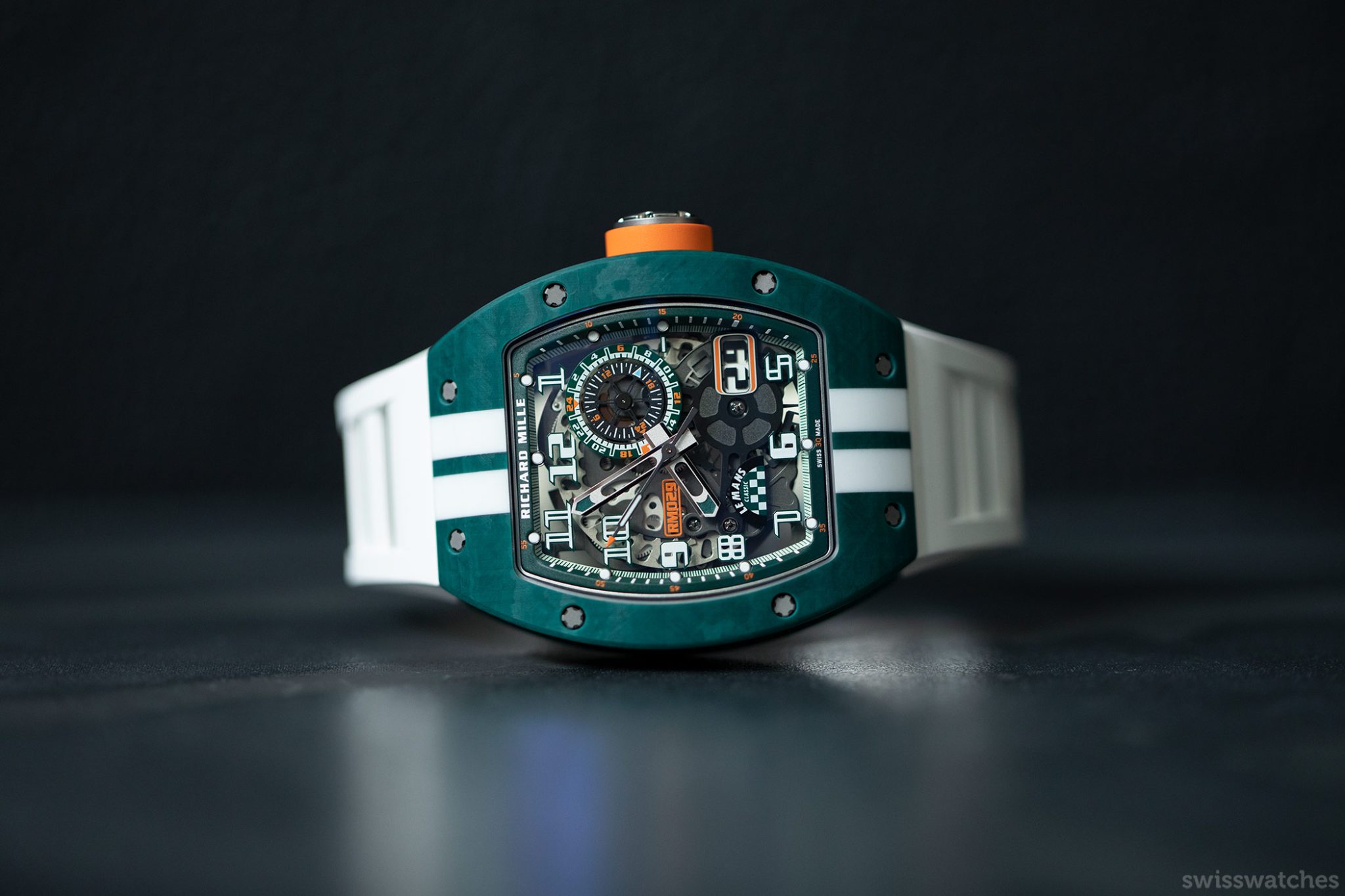
Impressions of the watch
As a rule, even self-confessed Richard Mille fans do not deny that a model like the RM 029 can hardly be compared with its competitors in the segment of six-figure retail prices. ‘Like something out of a candy machine!’ is a phrase one often hears. Some mean it as an insult, others as a compliment. Keyword: fun factor. One thing is certain, though. The RM 029, which is now the eighth model that Richard Mille has dedicated to the Le Mans Classic, nestles perfectly on the wrist and is so light that you could quickly forget the watch is there, which would be quite the shame.
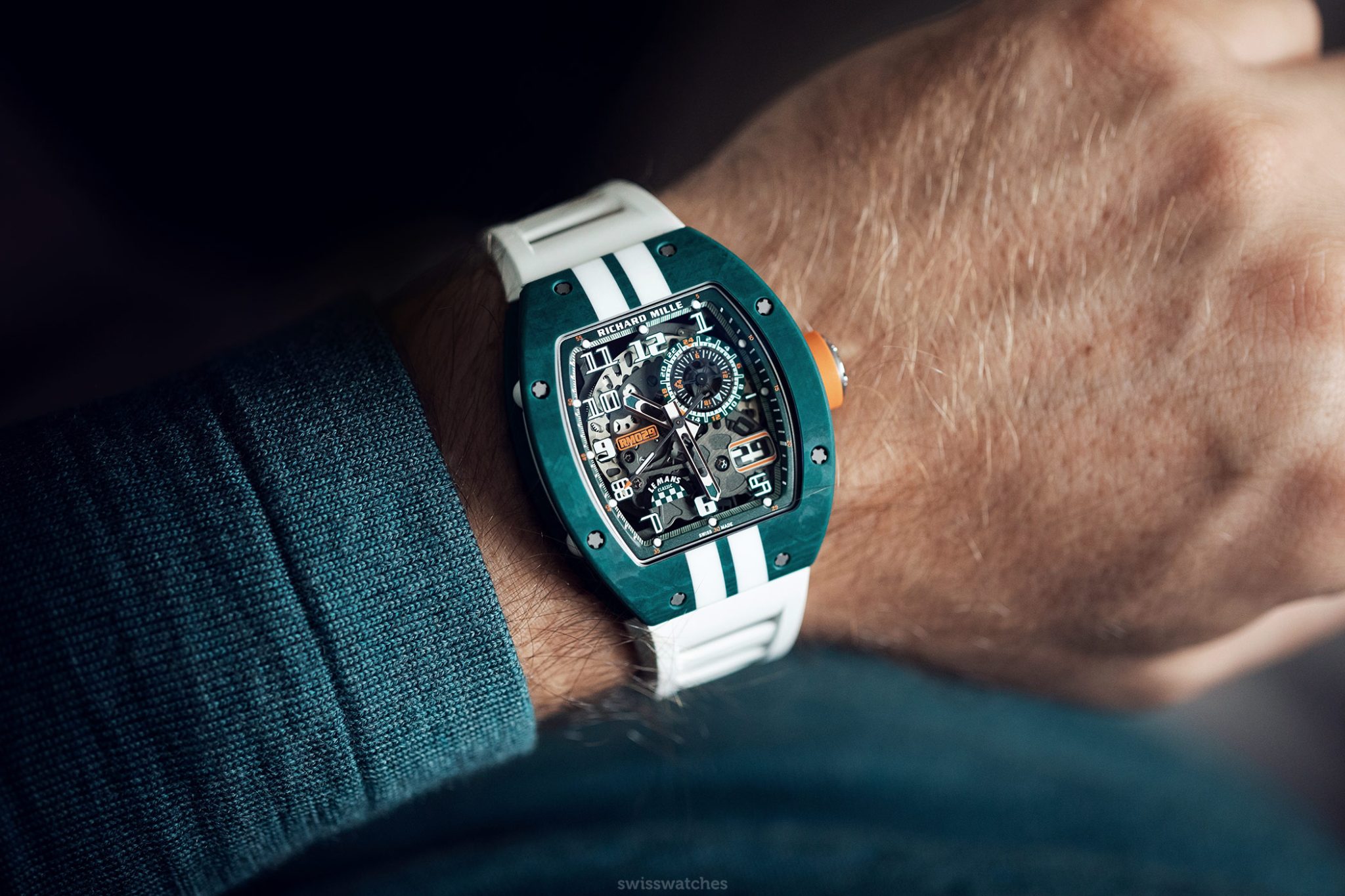
After all, this watch deserves every second and third glance. It’s these glances that turn a certain level of attention into great enthusiasm, and factual respect for a timepiece into great passion. The green quartz TPT material also has a special radiance. It shines intensely without being garish, and harmonises nicely with the orange accents.
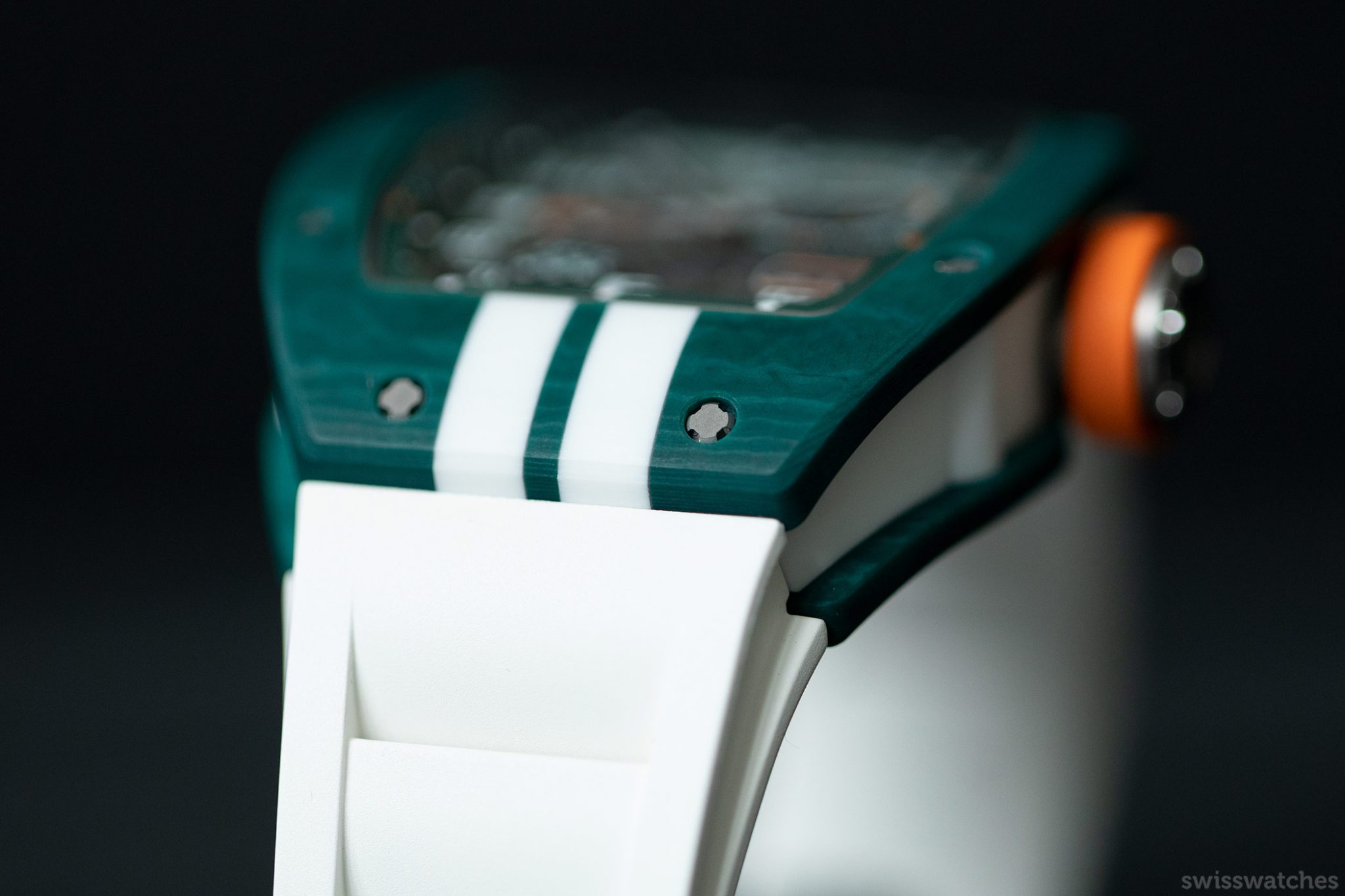
Of course, the RM 029 is not an unremarkable watch by traditional standards, and even in the Richard Mille cosmos, it stands out: the RM010 Le Mans Classic in rose gold from 2010, for example, was much more classic, and even the all-white RM11-03 Le Mans Classic chronograph from 2018, while bigger in appearance, was also more restrained overall. By itself, the white and green RM029 is nevertheless extremely pleasing. The flawless finish of the components in two different quartz TPT shades is also remarkable. Once you get a feel for this very special material appearing on a watch case, you will be able to appreciate that this combination is truly unique.
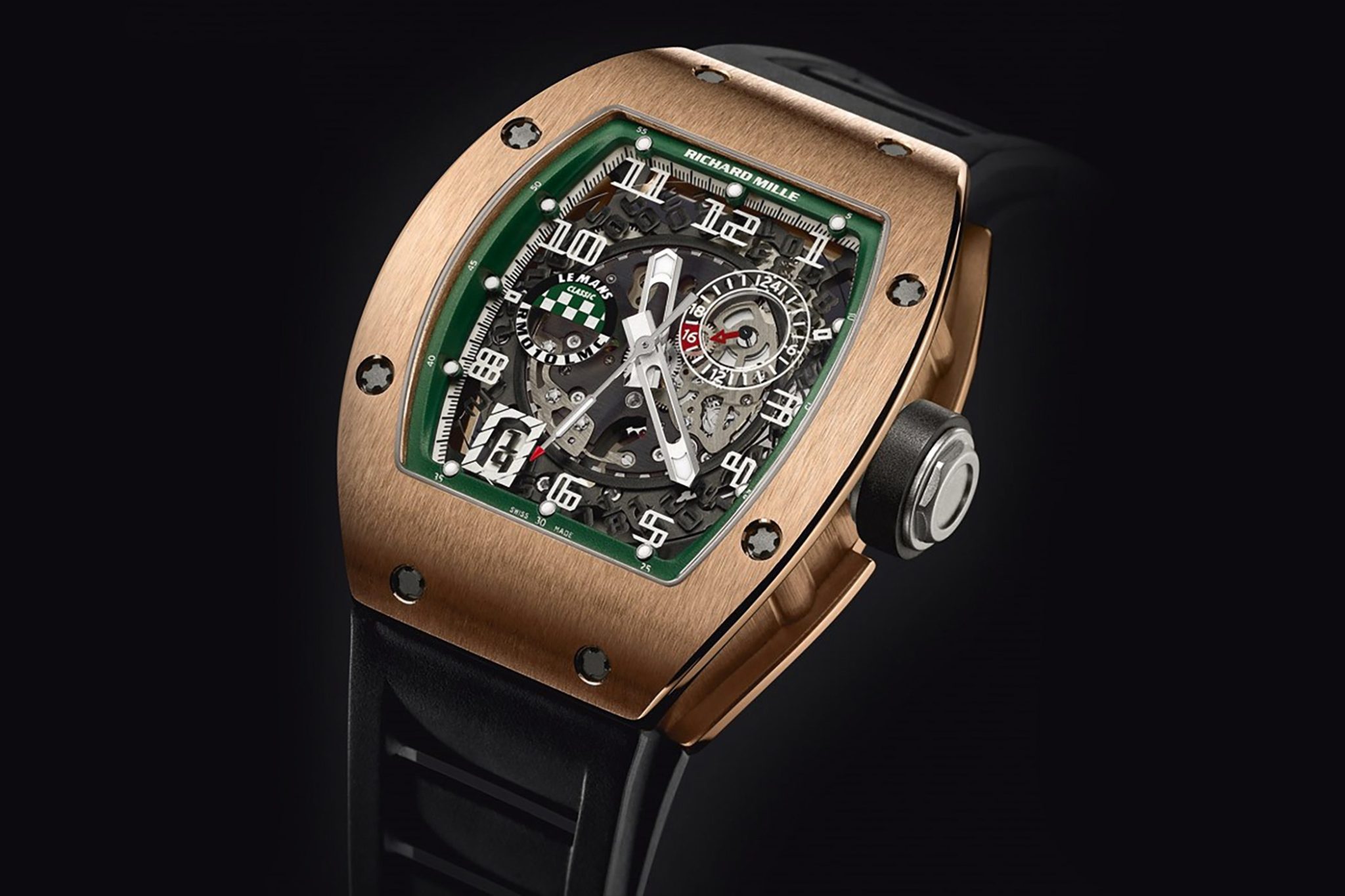
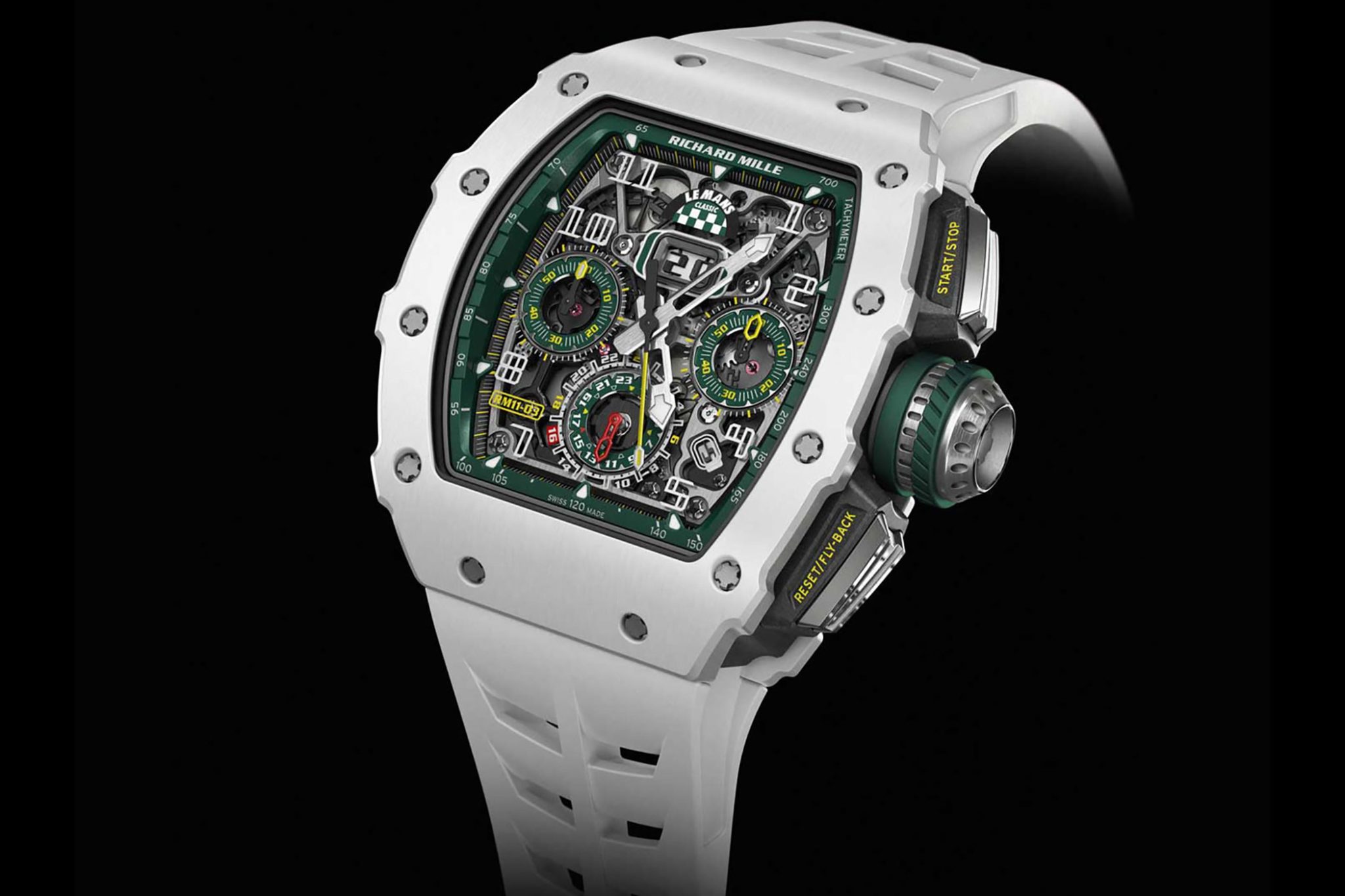
RM 010 Le Mans Classic from 2010 (left)
RM 11-03 Le Mans Classic from 2018 (right)
The Richard Mille factor
That leaves the question of the story behind the watch. After all, there are undeniably countless collaborations between watch brands and automotive partners. Very few of them are really (commercially) successful, however. This may be due to the fact that this learned marketing combination is now so widespread that it rarely still causes real excitement among watch enthusiasts. With the alliance between Richard Mille and the Le Mans Classic, one might impulsively ask: how does an event that celebrates classic automobiles fit in with a brand that pays homage to high-tech materials? A brand that can offer just about everything but classic cars? After all, its own history is still far too young. Wouldn’t it be better to stay with the likes of Formula 1, with the racing spirit of the 21st century?
As understandable as these thoughts might be, it is essential to consider in this context that Richard Mille actually co-founded the Le Mans Classic. First held in 2002, it is only one year younger than the horology house, and since then it has been held (in normal times) every two years. Only historic racing cars from 1923 to 1981 that have already competed in the 24 Hours of Le Mans and other examples of these models are allowed to take part. Well over a hundred thousand visitors came to Le Mans for the last Classic – and Richard Mille has been part of this spectacle from the very beginning.
Then, there’s the fact that many collectors of valuable classic cars also have a soft spot for valuable timepieces, so this event is deeply rooted in the brand and DNA of Richard Mille. Since 2008, limited editions have been created every time, and the combination of the classic colours of the Le Mans Classic with the quartz TPT so typical of RM makes the 029 a watch with very high collector value.
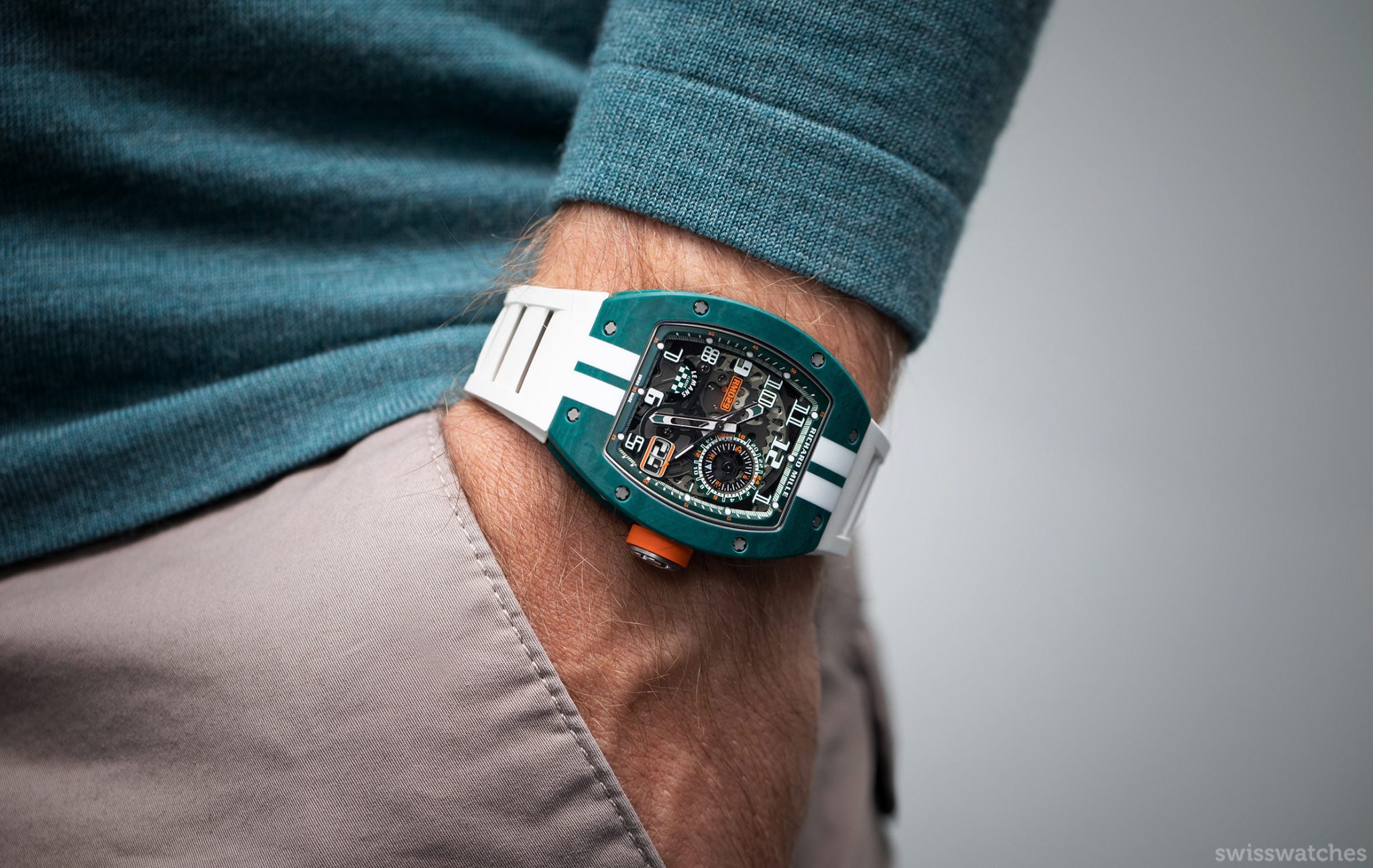
The Verdict
The sight of an RM 029 will remain a rare pleasure for the reasons mentioned above. On the secondary market, the prices for such watches are so sought-after not only because of their high desirability, but also because the brand chooses the buyers of its watches very carefully. Furthermore, once you make your way into the elite circle of Richard Mille customers, you don’t give up your watch(es) easily.
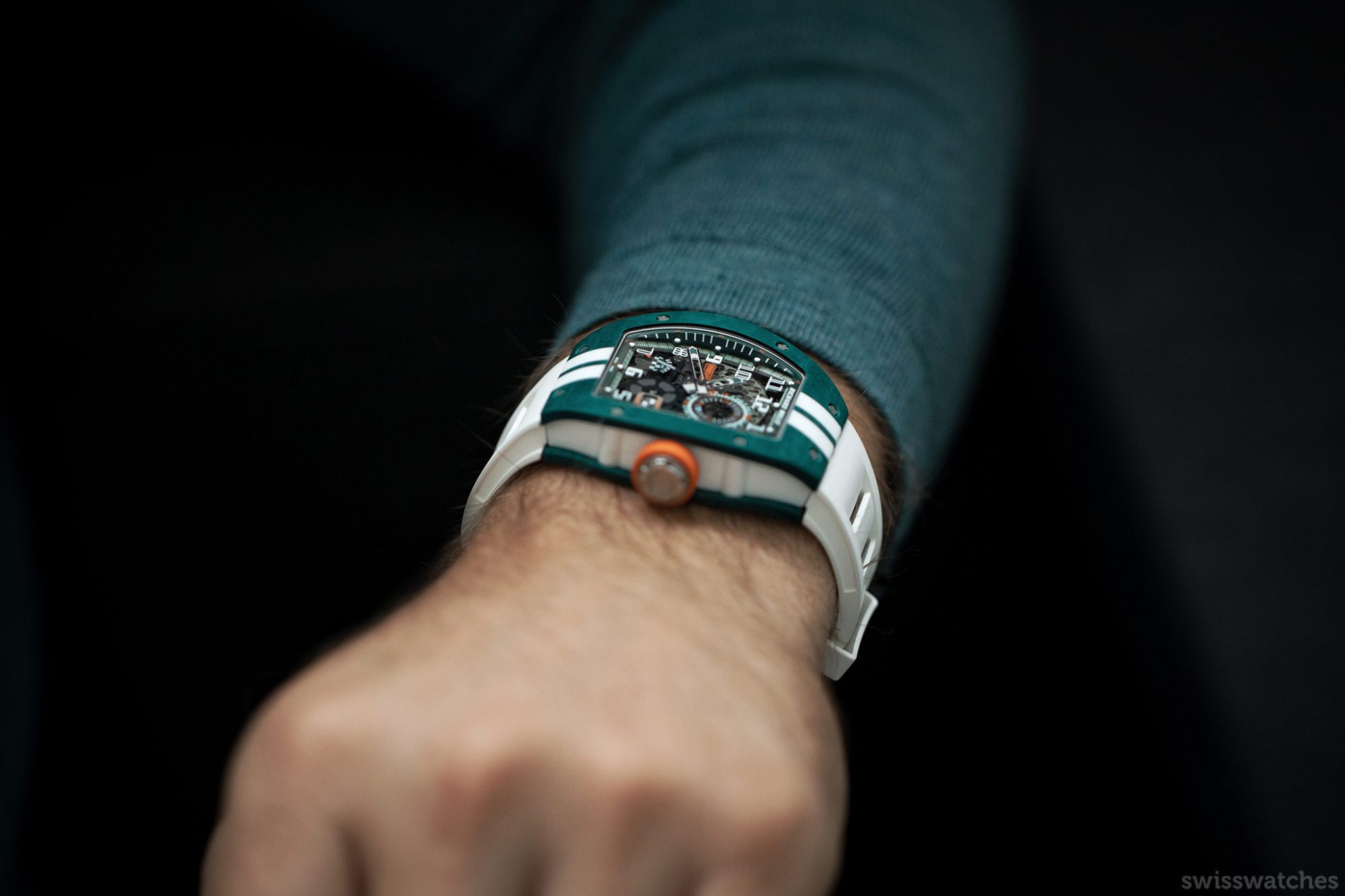
This latest Le Mans Classic from Richard Mille will hold particular fascination for collectors, precisely because the event belongs to the brand, and then also because two different shades of Quartz TPT are combined here so uniquely.

It is a watch that reflects the brand’s unconditionally forward-facing momentum, and with its green and white stripe look, it also holds the value of being incredibly recognisable. But even aside from issues such as potential future, status symbols, and collector desirability, the pictures shown here hopefully convey one thing very clearly. The RM 029 is an outstanding watch even without of all these aspects; it is a watch with the power to move, and that alone makes it a ‘must buy’ – equally for the top of the Le Mans Classic community and those far beyond.
